A Conversation with Tom Fedorek
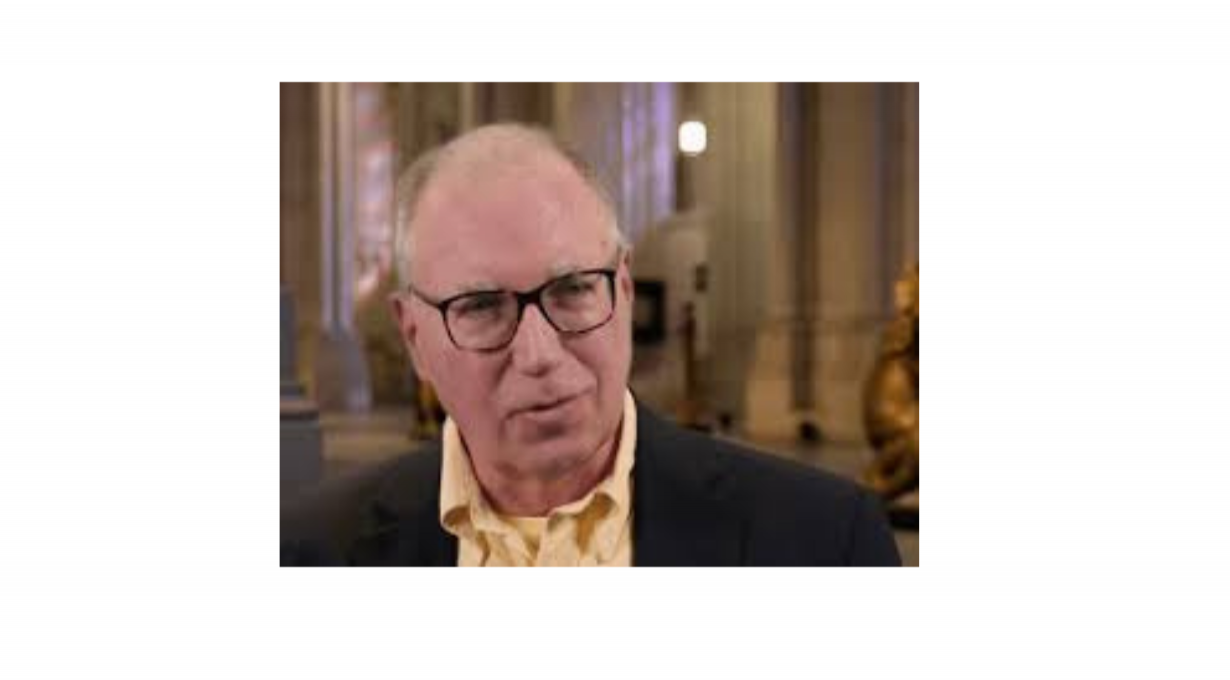
Tom Fedorek, Senior Guide in the Public Education and Visitor Services department at the Cathedral of St. John the Divine, celebrates 40 years of giving tours at the Cathedral this September. Below is a transcription of an interview with Tom, describing his relationship with the Cathedral and why he continues to give tours all these years later, and Kristine Pottinger, Director of Marketing & Communications at the Cathedral. (This interview has been edited and condensed.)
Tom Fedorek:
So the first time I ever came in here [the Cathedral] I guess I was 16, 17 years old, and I was kind of working my way down a list of places of interest in Manhattan. And wandered in here on one Sunday afternoon, and was deeply impressed by the very large, colorful stained-glass windows. And I never quite forgot them. And then years later, I was living in Manhattan and moved up to this neighborhood from Hell's Kitchen. The rent was cheap, believe it or not.
Kristine Pottinger:
And you moved up from Hell's Kitchen in what year?
TF:
Well, I moved up here from Hell's Kitchen in about 1973, or 1974. After high school, I went to college for a year. It didn't work out well for the college, or for me. And so, I worked for a long time. I used to work in classical record shops. This was Sam Goody. The Record Hunter, later on King Karol. I ended up managing a record store in Times Square in the early 1970s.
I was a kid. I mean, I was 22 years old. Anyway, I started living in Hell's Kitchen, and then I moved up here. I remembered being in this building, and I started coming to it. Just to walk around, and really, to heal because I was not in really good shape at that point. I would just come here, and sit, and think things through. And then I kind of got it together, continued my education, and enrolled in the Columbia School of General Studies where I majored in Classics. All the undergraduates have to take this course that we know very well.
KP:
Yes, everyone at the Cathedral knows the undergraduate arts and humanities intro class very well.
TF:
And so, I was in this Art History 101 course. And we had this unit on Gothic cathedrals, and I became fascinated with them. Particularly, with one reading we did, Émile Mâle. The Gothic image, which is one I've read five times now. One of those books you meet in your education that makes a difference. They didn't do vertical tours back then.
KP:
Oh, interesting. So this was 1970...?
TF:
This was in the mid 1970s. And in fact, my instructor said, "Whatever you do, do not go into the Cathedral of St. John the Divine because you'll get a totally wrong idea of what a Gothic cathedral is supposed to look like." And having been the kind of person like Huckleberry Finn who doesn't let his schoolin’ interfere with his education, of course, I started coming here.
KP:
Of course.
TF:
And that's when I started to get really interested in the architecture and iconography. Gradually, I started to get involved with the life of the cathedral. My wife and I were married here in 1982, and then I was confirmed here in 1984. There was a man named Jonathan King who was a Canon here. His grandparents donated the St. Columba’s Chapel, which used to be the King Chapel.
He had a long connection to the place, and he loved the place. He had prepared me for confirmation, and he was in charge of the guides. I felt like I should do some volunteer work here and so it was kind of a natural for me to study up to become a guide. And I also became, at that point, a coordinator of the homeless shelter that used to operate here in the space that's now occupied by CCC.
KP:
You started giving tours as a guide 40 years ago. 1984?
TF:
1984, yeah.
KP:
But when did you start at CCC? The precursor?
TF:
Well, that same year. I took on two volunteer gigs.
The shelter was probably the hardest job I ever did. Very challenging. I stopped after three years, but I kept up with the guiding.
KP:
And what was different about the shelter than what we have now? It was an actual shelter, people slept here?
TF:
Oh, it was an actual shelter. And it was actually begun by the Catholic Campus Ministry at Columbia. But the Catholics came to the Cathedral and asked for space.
It really got no material support from the Cathedral, except for the space. The city provided the cots and the bedding. There was no clergy liaison, at least not at first. But we operated there, and people would show up. If we had a bed, we would give them a bed. People didn't get screened, or anything. And that turned out not to be a great idea, particularly when crack hit the streets.
KP:
Right.
TF:
There was one evening somebody with a baseball bat chased me down the driveway. He was crazy on crack, and so that's when we started to screen people. And the shelter continued to operate for a long time, this was long after I left it... but back to the guide thing.
KP:
How was the early department structured?
TF:
So there was no PEVS [Public Education and Visitor Services].
Canon King was in charge of scheduling the tours, but that's about all he had time to do, with everything else he did at the Cathedral. And then he left to take a parish in New Jersey. And so, we were kind of sheep without a shepherd as Cathedral guides, and it was a very mixed bunch. I mean, there were some really great guides. Howard Quirk, Vivian Hewitt, Leigh Jenkins. Howard Quirk was a wonderful man and mentor to me.
And so, we kind of wandered in the wilderness. Eventually, the guy who was in charge of scheduling the tours, and managing the guides, was the same guy who was in charge of the ashes for the Columbarium.
This all changed in 1991 when Becky Richardson came here to create PEVS. She had an MBA, and a degree in museum education, and had run a historic home in Kansas. She was perfect for the job, and she was a dynamo. She recruited new guides, she did training. We did outreach to commercial tour operators, to schools, to other cultural institutions. She really built a lot of bridges, and it's pretty much the program that we have today. I probably wouldn't have stayed here all this long if there hadn't been some structure.
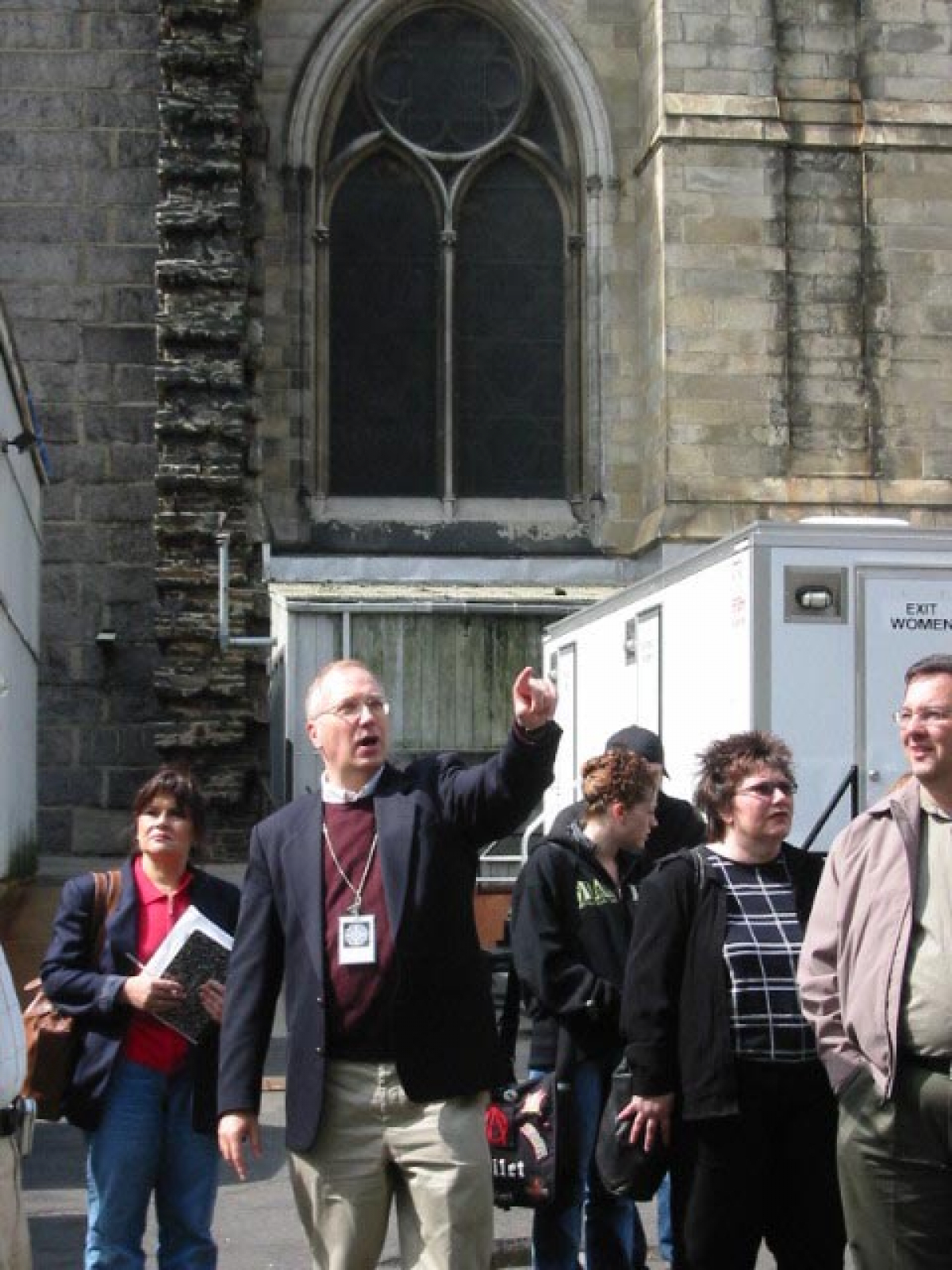
KP:
So all you were offering, with no ticket charge, were highlight tours. When did vertical tours begin?
TF:
Before PEVS, Howard Quirk would sometimes do a vertical tour for friends, and friends of friends, friends of the Cathedral. But it was not a regular scheduled thing. In fact, I once suggested to one of the clergy, "You could raise some money by charging people to go up there," and the answer I got was, "Why would anybody want to go up there?" And then, I also once suggested doing what ultimately would become the Crypt Crawl, and they just laughed in my face.
But once Becky came, all that changed. She was very open to new ideas. She started charging for the tours. That's when we started doing public vertical tours, and highlights tours and spotlight tours on special topics. And Becky’s successors have basically kept up what she started.
KP:
When did you do your first vertical tour, would you say?
TF:
The first vertical tour open to the public, I guess, was around 1991, 1992. Originally, at first, just Howard and I did them.
We would alternate Saturdays, and there were two climbs. We would climb up to the triforium that's underneath the rose window, and then we'd come down, and take a little break. And then, we'd do the climb the vertical tour, and we did this twice. We did it at 1:00, and we did it at 3:00. And you would do both tours, and it was exhausting. I mean, I was a younger man then.
Howard was about in his 60s. And at some point, we just dropped the west triforium. I guess after the fire in 2001.
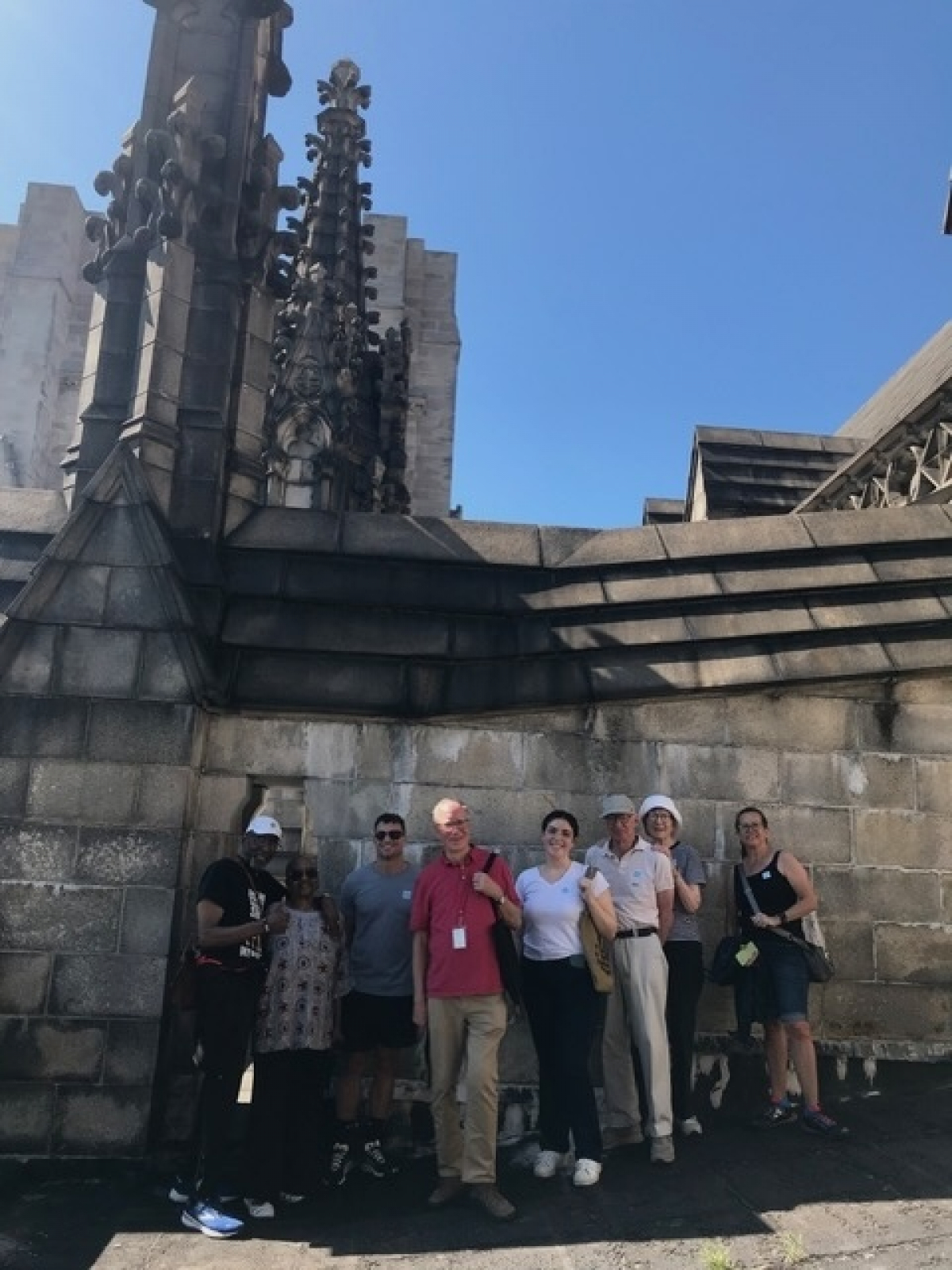
KP:
Doing, basically, 23 to 25 stories twice a day – that’s a lot of stairs.
TF:
It was a lot of stairs. Yes, a lot of stairs.
KP:
When did you start doing your spotlight tours?
TF:
At different times, I would get an idea for a tour, and I'd develop it. I'd do the research. For every minute of tour time, there's about an hour of research.
I would do the research, develop the tour, and launch the tour. There are some that I stopped doing a lot. I stopped doing because it just didn't seem to attract people.
KP:
Your Portals of Paradise tour was one that I know that you do.
TF:
Yeah, all the Portals. And there's another one called the Secrets of St. John the Divine which is about hidden images. There is one based just on the architecture, Unfinished Symphony, and there was The Last Crusade, which I developed for the centennial of the first World War which is about the iconography in the cathedral that echoes Allied propaganda. My favorite is “With Angels and Archangels,” where we look at images of angels in different media and I talk about angels in the Christian, Jewish, and Islamic traditions. At the end, we climb up to the south triforium for a close-up look at the Archangels Window.
KP:
What other volunteer activities have you done at the Cathedral?
TF:
For several years, I was the Virgin Mary puppet on Christmas Eve.
KP:
For Lessons and Carols?
TF:
Yes. And I had friends who think the Cathedral is a little eccentric, and I always enjoyed telling them that on Christmas Eve I played the Virgin Mary at the Cathedral.
KP:
That would be a very eccentric thing for a cathedral to do.
Do you have any memorable encounters with visitors to share?
TF:
The Cathedral is pretty well organized now, but there was a time when it was less well organized. And so, you never knew what you're going to run into when you were doing a tour. They had all kinds of events that shouldn't be taking place simultaneously, but they're taking place simultaneously. I had a tour for a group of West Point cadets who showed up in their uniforms, and everything. And at the same time, inside the cathedral... Are you familiar with Robert Wilson? Einstein On the Beach?
KP:
Yes.
TF:
Well, he was putting on one of his theater pieces here in the Cathedral, and there was a rehearsal going on. And one of his trademarks was extreme slow motion. And so, there were these people in Victorian dress moving across the Crossing at extreme slow motion, and here I am with these cadets pointing out the finer points of the Gothic architecture. It was kind of surrealistic.
KP:
What year would that have been, do you think?
TF:
Yeah, 1990s. And then I remember taking people out to the North portal, the Martyrs Portal, which is where I tell the stories of each and every one of the martyrs, and the gruesome ways in which they died.
KP:
And they're holding the implements of their deaths.
TF:
Yes. And so when we get there, there's this punk rock band that's getting their pictures taken, I guess, for an album cover. I mean, they're all punked out. They got their mohawks. They got their tats, and their piercings, and their leather, and their boots. And I walk up to them in my blue blazer, and khaki pants, "Say, fellows, I just need to be in here for a few minutes. You're welcome to listen in." And by the time I got to the last martyr, they were standing there. They were listening, with their jaws hanging open, and their eyes bugging out. They were so grossed out. So those are a couple of memorable ones.
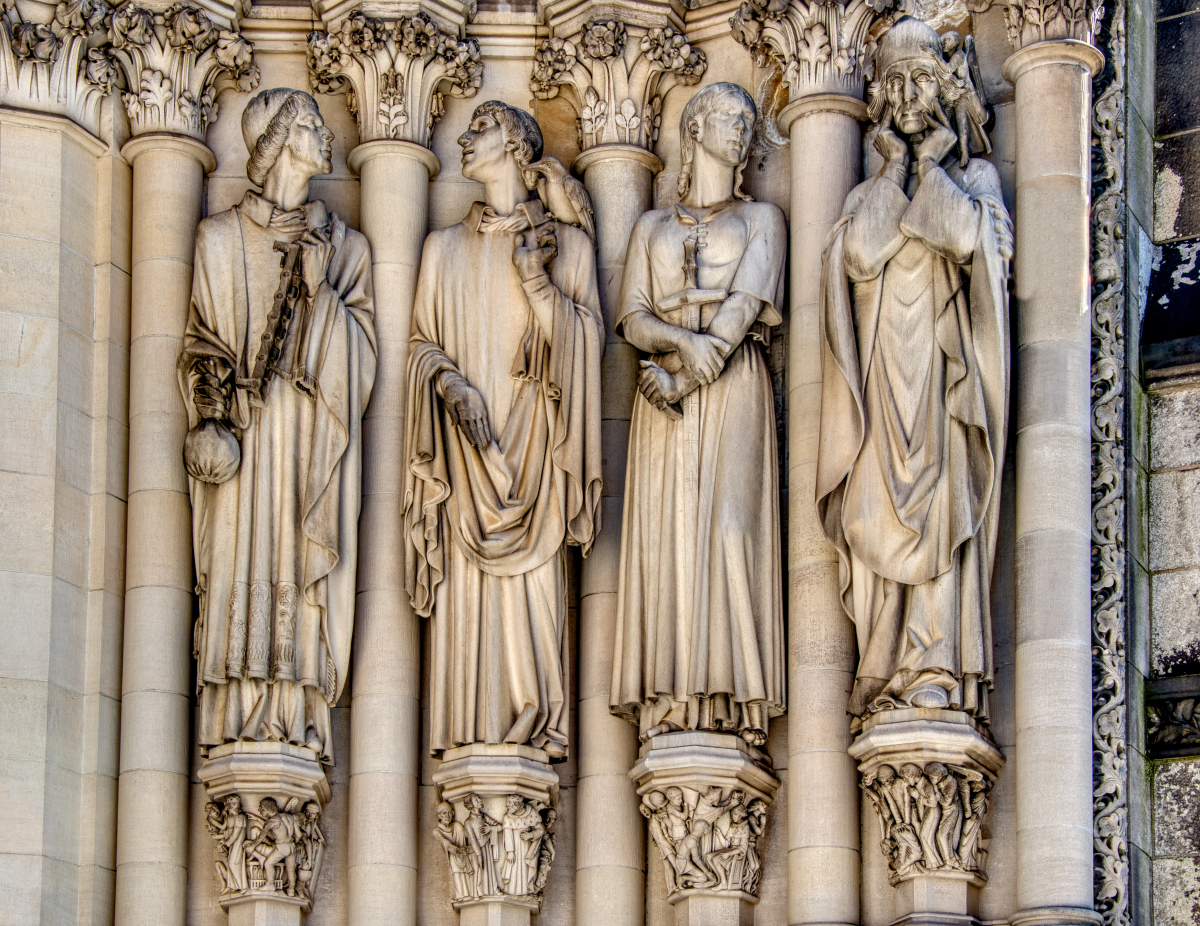
TF:
I’ve also had the opportunity to have people on tours whose ancestors played some role in the cathedral’s creation. I did a tour for descendants of Horatio Potter and took them behind the High Altar so they see the recumbent figure on his tomb. And I had the pleasure of leading the grandson of Ralph Adams Cram over to Synod House to see the image of our architect on its façade. He was quite tickled.
KP:
Definitely. I like the story of the woman whose husband was the model for Bishop Manning.
TF:
Yeah. She wasn't even on a tour. She just popped in out of the blue. She spoke to David first.
KP:
At the Visitor Center?
TF:
Yes. She said, "I want to see the sculpture that my husband posed for," and she starts talking about, "I think it's in the crypt." David had no idea what she was talking about, but fortunately, I was on the scene. And she starts talking to me, and she says, "Well, he had to go to the crypt, and he had to lie on a table." And I thought, "Oh, I know where it was." He was in the studio of the sculptor Constantin Antonovici, and he was the model. He laid on it because Antonovici had never seen Manning when he made the Manning tomb. He needed a model who was about the size of Manning, and Manning was a very short man. So I asked the woman, "Was your husband short of stature?" She goes, "Oh, yes."
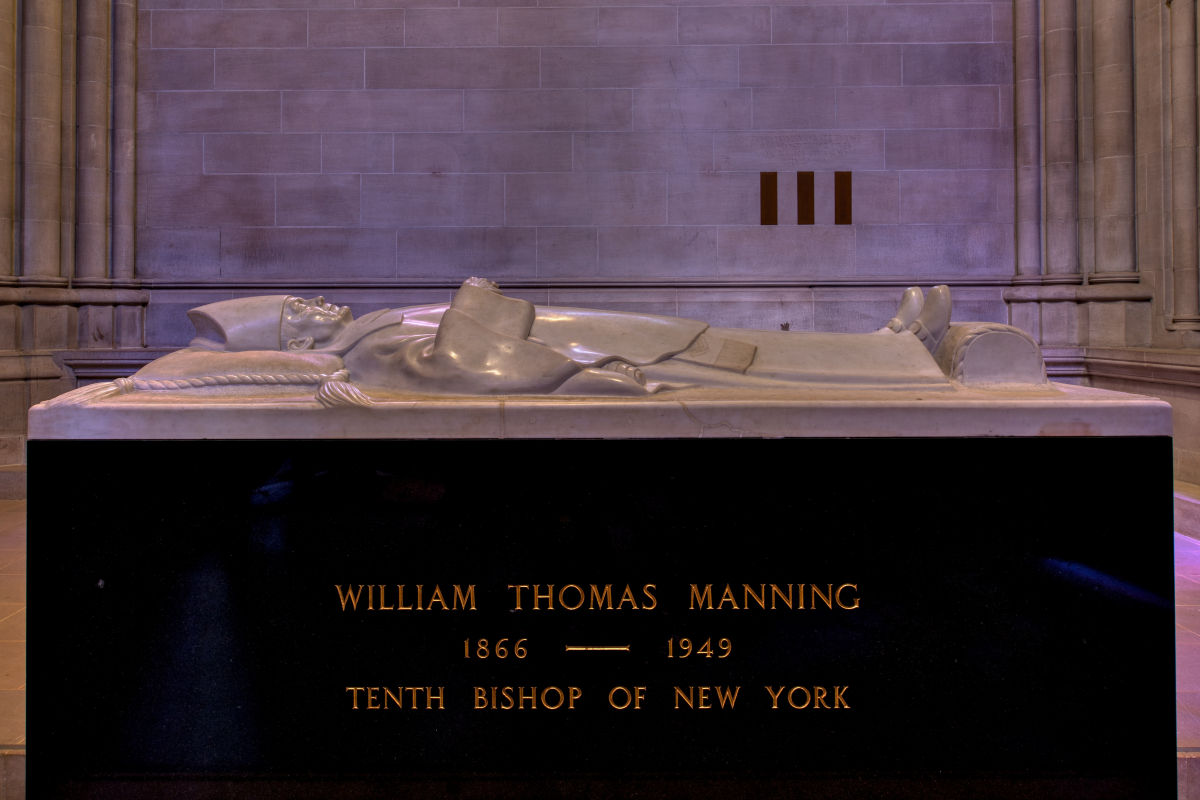
KP:
That's how you confirmed it.
TF:
Yeah. And I took her over to the Manning tomb, and she says, "Yes, that's his body."
KP:
That's so sweet.
TF:
Yeah, that was quite memorable.
KP:
Other than the portals, what else do you love in the Cathedral?
TF:
My favorite window is the rosette atop the clerestory window in the Communications Bay. The colors are amazing and there’s a rainbow that snakes through the eight lobes around the perimeter. Being a child of the Sixties, I always describe it as psychedelic. And in the center is Jesus, gazing out at us with large, liquid, loving eyes. I once had someone on a vertical tour who told me “This is what I hope to see when I close my eyes for the very last time.”
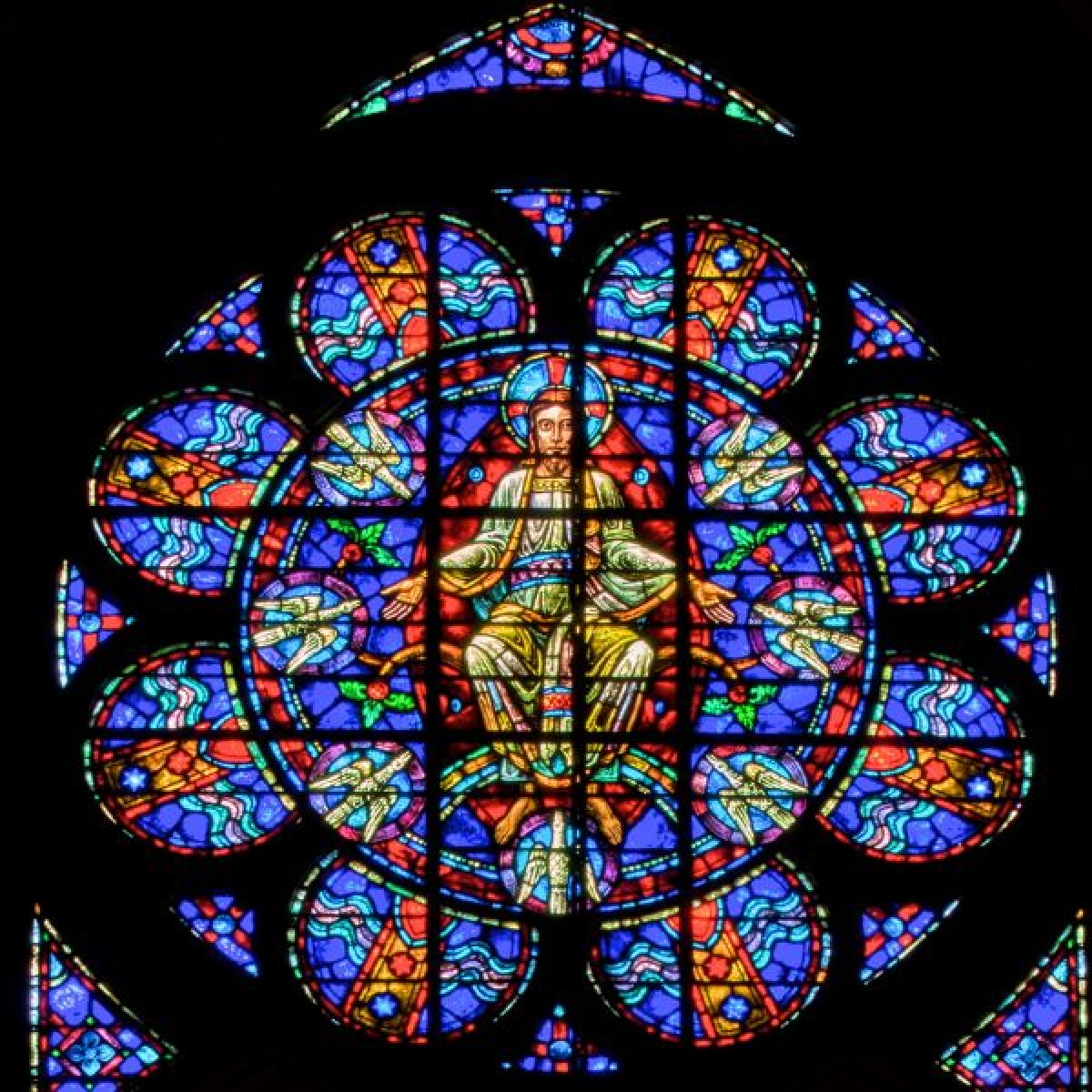
TF:
There are two architectural features in the Nave that I think are really extraordinary. Our triforium is in the wrong place. Every other Gothic cathedral, it's right above the center aisle of the cathedral. Well, Cram, because he was adding on to this very broad cathedral that Heins and LaFarge had begun, had to make a Nave that was a broader than any other Gothic cathedral ever had.
And so, he set back the triforium to its current location, and what that does is to liberate the six-foot diameter columns, the thinner columns. It liberates them so that they rise from floor to ceiling without any interruption, and that just enhances the verticality. And I always think of those columns as little skyscrapers, and I often reflect on how Cram was probably influenced by the Art Deco skyscrapers that were going up at the same time as the nave was. So I love that because Cram had an ambivalence about the skyscrapers. He kind of acted like he didn't like them, but he really did like some of them. He loved the Empire State Building.
KP:
Really?
TF:
Actually, in Pittsburgh, there's a church he designed, East Liberty Presbyterian Church, and it has a big spire on top of the tower.
KP:
I think I've seen it.
TF:
Yeah. Well, compare it to the spire of the Empire State building. It's very similar, and that was one skyscraper he just unabashedly admired. And they were both completed the same year.
The other architectural feature that I really love is that series of oculuses with the eight lobes that go symmetrically. Lined up in perfect symmetry from one side of the nave to the other and cut from the same template as the oculus at the top of each of the clerestory windows.
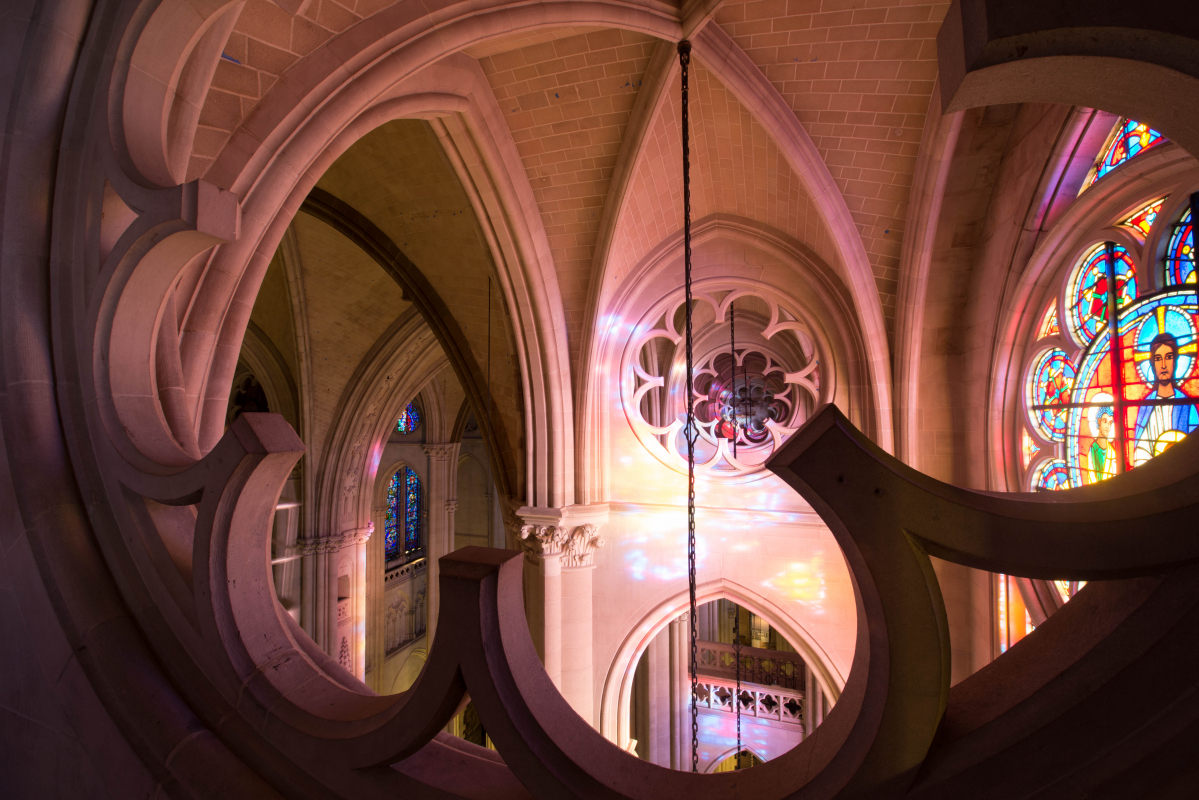
KP:
I didn't know that it was cut from the same template. It makes perfect sense.
TF:
Yeah, it's exactly the same. Same diameter. Same eight lobes.
And I once was at a dinner and had the good luck to be seated next to Professor Stephen Murray from Columbia University. He's their Gothic cathedral expert and so, of course, I took advantage of the opportunity to ask him a million questions, and I asked him about those oculuses. I asked him, has he ever seen them anywhere else? And he had not. They are unique to St. John of the Divine.
KP:
And based on what you said earlier about the setback of the triforium, and there are very few places that you would be able to do that. It's one of my favorite spots.
What was your best tour experience, or one of them?
TF:
There are a lot of people who have a very personal connection to the space. Dean Morton used to say, "The space has its own ministry," and a few people have shared that with me. I remember there was one man who told me, "I come here whenever I need to have a good cry," It's good to be affiliated with a place like that.
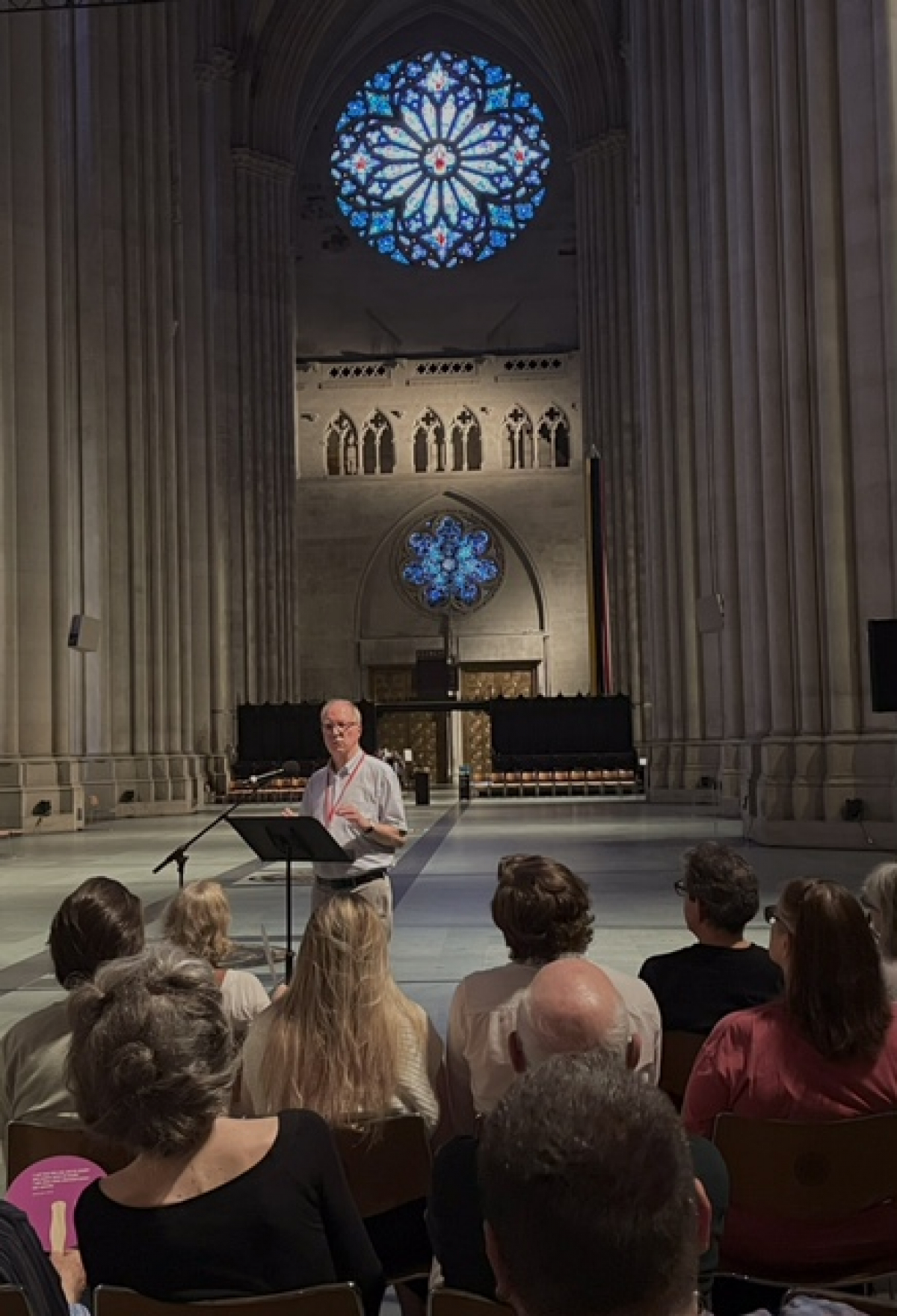
KP:
And you are a facilitator of that, too, with all the information that you share. It makes people feel as if they know the space better, and they can be more a part of it in some way.
TF:
The space speaks for itself. My job is just to help them understand what they're experiencing. And even though our tours are completely non-sectarian in terms of the information, I've always looked at it as a kind of ministry, and I've tried to reflect the nature of the institution that I'm serving. And be joyously welcoming, and completely accepting, and very respectful.
KP:
Is that what keeps you coming back, and giving more tours? It's that ministry?
TF:
Yes, it is. For me, it is a ministry.
KP:
That's a really wonderful way to look at it. So how long do you think you're going to keep doing it?
TF:
Well, as long as my knees hold up.